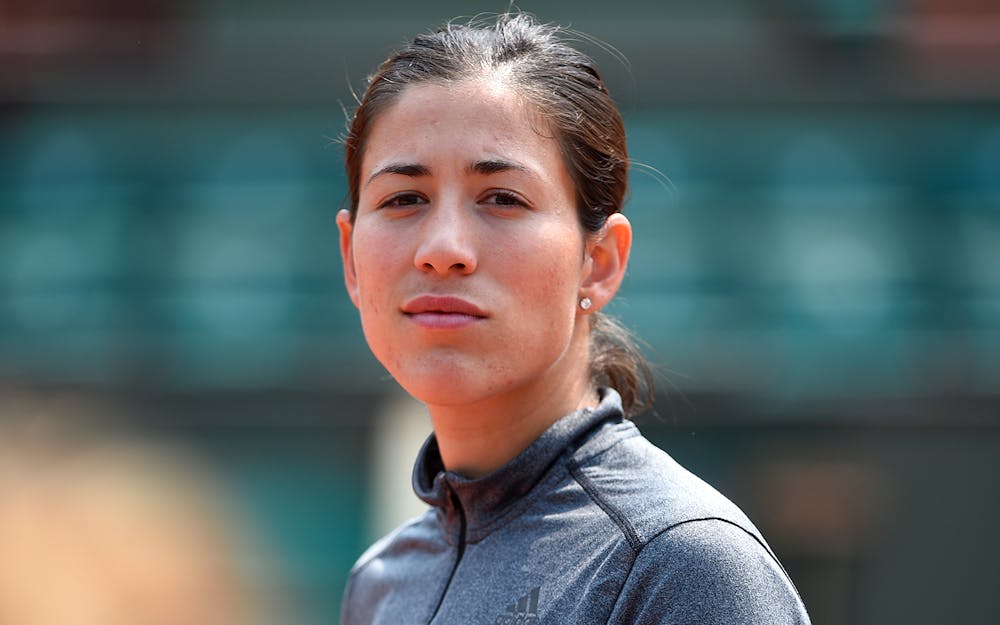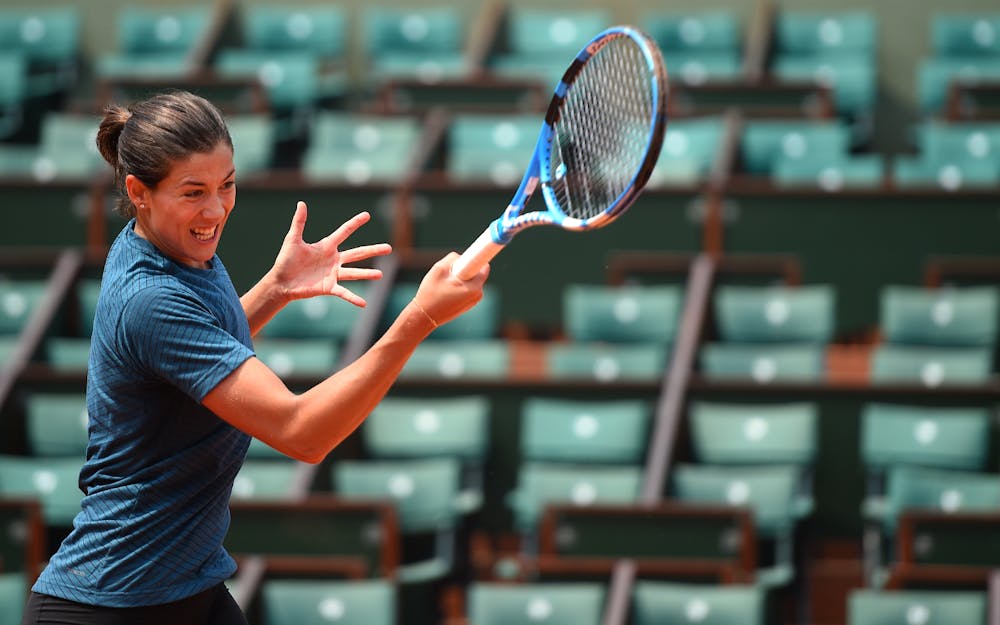Out of the 20 or so women players who could potentially lift the Coupe Suzanne Lenglen on June 9, the case for the 2016 French Open champion should be robust – even after the draw pitted her against 2009 champion Svetlana Kuznetsova in the opener.
The case for: Garbine Muguruza
Consistent inconsistency may be her calling card, but the two-time Grand Slam champ thrives on the big stage.

In big-picture terms, the powerful and elegant Spaniard has notched up two Grand Slam triumphs from three final appearances since 2015. She is the reigning Wimbledon champion, and the world No.3. Last year she spent four weeks at the No.1 spot, and was declared the WTA’s 2017 Player of the Year. In terms of achievement, Muguruza has no monkeys on her back, and she is still only 24.
She struggled last year with the pressure of defending the title, but this year she arrives free of external expectation: “It’s more relaxing,” she admitted. “It feels different.”
“A warrior” is how she describes herself, and her chastening experience here last year - when she lost in the fourth round to home favourite Kiki Mladenovic in front of a febrile, partisan crowd and broke down in tears in her press conference – will surely intensify her inner war cries.
Underpinning her status as a key contender here is a genetically attuned affiliation with clay. As a Venezuelan-Spaniard, she has spent ample time on the dirt. She calls it her “territory” and the French Open is her most consistent Slam – she has made the second week in her last four appearances. With her ability to unleash explosive groundstrokes, serves and returns while moving and sliding effectively on the terre battue, she is a formidable opponent… on a good day.

The frustrating aspect for Muguruza fans is her inconsistency. If there is such a thing as being consistently inconsistent, or predictably unpredictable, Garbi manages it. She blows chaud et froid, as they (don’t actually) say in these parts. Mostly this is due to her high-risk, aggressive game style: when it is good, it is very, very good, but when the unforced error count rises, her spirits can deflate, and she often loses matches to competitors ranked below her. Her power game takes a physical toll too.
Take her pre-Roland-Garros campaign. In Stuttgart, she retired with a lower back injury when playing world No. 27 Anastasia Pavluchenko in the last 16. In Madrid, she failed to reach the quarter finals, losing to Daria Kasatkina, ranked No.14. In Rome, she fell in the second round to world No.24 Daria Gavrilova. But the Muguruza contemplating RG2018 is positive about her preparation. “They kind of slip away, all the matches somehow,” she shrugged. “So even if it's a little bit disappointing, I feel like I was there and I had my chances and eventually they will come to my side. I feel good. I have been training a lot.”
Some whisper that her champion status brings with it off-court distractions, such as being invited to walk the red carpet at the Oscars, or posing for a shoot for Vogue magazine, or working on her own fashion design. Great champions are notable for a healthy work/life balance, and Muguruza sees these glamorous opportunities as chances in a lifetime. At the Oscars, she felt “a bit out of place, like, 'what am I doing here?' It's all about superstars and I was representing the world of sport. It was a good experience to witness all the Hollywood glam. But I live in a different world of competition. I'm more of a warrior."
After a rollercoaster start to the year, there is no doubt Muguruza is eager to add to her Grand Slam total – starting with that opener with Kuznetsova (against whom she holds a 5-1 record). “It's a good first round. We have a lot of great battles, so it’s going to be good,” she said. “Last year I remember I started with [2010 champion] Schiavone. It’s good to have a tough match first.”
 ROLAND-GARROS
18 May - 7 June 2026
ROLAND-GARROS
18 May - 7 June 2026

